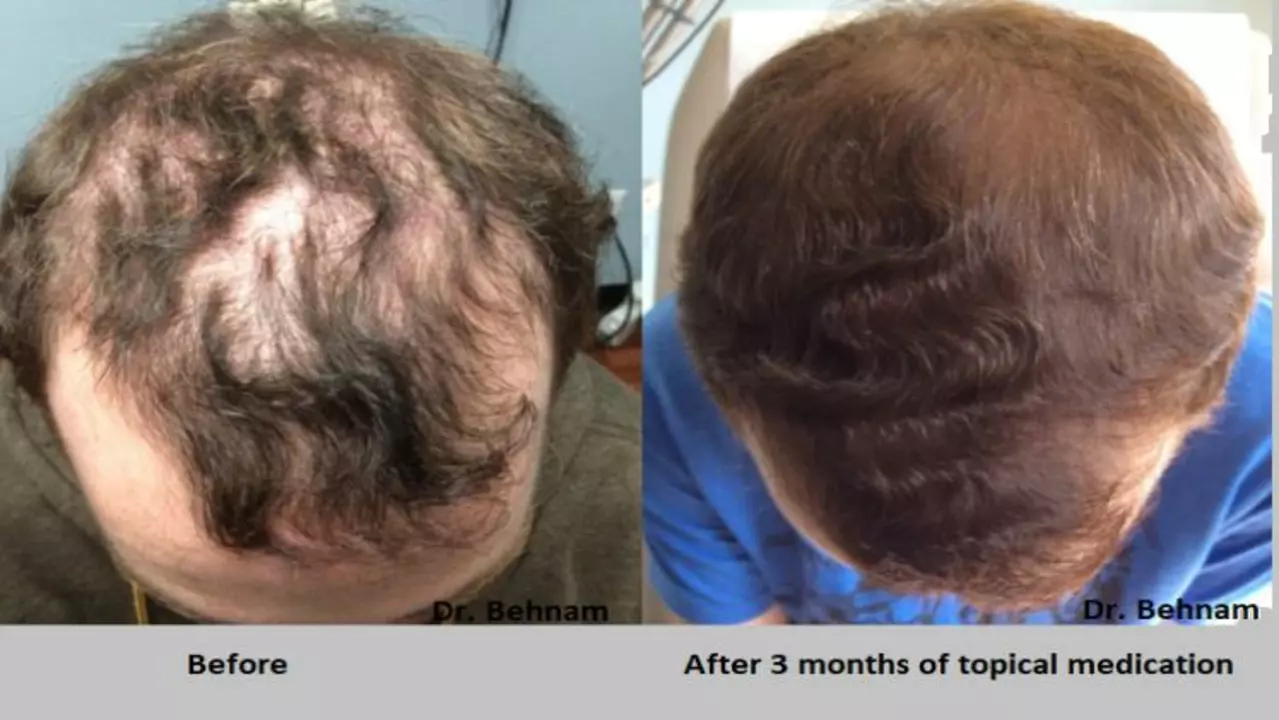Understanding Age-Related Hair Loss
As we age, our bodies go through a variety of changes, and one of the most common yet distressing changes we experience is age-related hair loss. Losing hair as we grow older can be a significant blow to our self-esteem, making us feel less confident and less attractive. There are many factors that contribute to age-related hair loss, including hormonal changes, genetics, and lifestyle habits. In this article, we will discuss the topical treatment called Minoxidil, a popular and effective solution for seniors who are dealing with hair loss.
The Science Behind Minoxidil
Minoxidil is a medication that has been proven to effectively treat hair loss in both men and women. It was initially developed as a treatment for high blood pressure, but researchers soon discovered that one of its side effects was hair growth. This led to the development of a topical formulation specifically designed to combat hair loss. Minoxidil works by increasing blood flow to the hair follicles, providing them with more nutrients and oxygen. This, in turn, stimulates hair growth and prolongs the growth phase of the hair cycle, resulting in thicker and healthier hair.
How to Use Minoxidil Topical Solution
Using Minoxidil is quite simple, and it can be easily incorporated into your daily routine. It is available in either liquid or foam form, and the recommended dosage is 1ml or half a capful twice a day, applied directly to the scalp. Make sure your hair and scalp are dry before application, and use the provided dropper or pump to measure the correct amount. Gently massage the solution into your scalp and allow it to dry naturally. Remember to wash your hands thoroughly after applying Minoxidil to avoid unintentional transfer to other areas of your body. Consistency is key when using Minoxidil, so it's crucial to apply it regularly to see the best results.
Results and Side Effects of Minoxidil
It's important to note that Minoxidil is not a miracle cure for hair loss and requires patience and consistent use to see results. Most users begin to notice new hair growth within three to six months of consistent application. However, individual results may vary, and some may experience faster or slower progress. It's also essential to keep in mind that if you discontinue using Minoxidil, your hair may return to its previous state within a few months.
As with any medication, there are potential side effects associated with Minoxidil. Some of the most common side effects include itching, redness, and irritation at the application site. These side effects are usually mild and subside over time as your body adjusts to the treatment. More severe side effects, such as chest pain, rapid heartbeat, or dizziness, should be reported to your doctor immediately. Always consult with your healthcare provider before starting any new medication, including Minoxidil, to ensure it's safe and appropriate for your individual needs.
Other Tips for Combating Age-Related Hair Loss
While Minoxidil is an effective solution for age-related hair loss, there are other steps you can take to complement its effects and promote healthy hair growth. Eating a balanced diet rich in vitamins and minerals, such as biotin, zinc, and iron, can help provide your hair with the essential nutrients it needs to grow. Incorporating regular exercise into your routine can also improve blood circulation, which is beneficial for hair growth. Finally, adopting gentle hair care practices, such as using a wide-toothed comb and avoiding harsh chemicals, can help prevent additional hair damage and breakage.
In conclusion, Minoxidil topical solution is a proven and effective treatment for seniors experiencing age-related hair loss. With consistent use and a healthy lifestyle, you can regain your confidence and enjoy a fuller head of hair. As always, it's important to consult with your healthcare provider before starting any new medication or treatment plan.


Eli Grinvald
May 10, 2023 AT 18:14Caden Little
May 11, 2023 AT 09:28Alexander Ståhlberg
May 12, 2023 AT 11:51And don't get me started on the 'healthy lifestyle' nonsense. You think eating kale and doing yoga will fix genetic balding? Please. My grandfather lost his hair at 35 and lived on whiskey and cigarettes. He died at 92 with a full head of hair. Coincidence? I think not.
Eric Donald
May 14, 2023 AT 06:04Brenda Flores
May 15, 2023 AT 03:07Jackie R
May 16, 2023 AT 23:09Josh Arce
May 18, 2023 AT 07:45Alexis Hernandez
May 18, 2023 AT 14:52brajagopal debbarma
May 20, 2023 AT 01:12Carly Smith
May 21, 2023 AT 17:13Kurt Stallings
May 22, 2023 AT 13:00Angie Creed
May 22, 2023 AT 15:02Michael Ferguson
May 24, 2023 AT 14:23Patrick Klepek
May 26, 2023 AT 10:40Sebastian Brice
May 27, 2023 AT 20:41Jim Aondongu
May 29, 2023 AT 12:47Michael Schaller
May 31, 2023 AT 05:59Kyle Tampier
May 31, 2023 AT 07:36Tom Caruana
June 1, 2023 AT 06:44